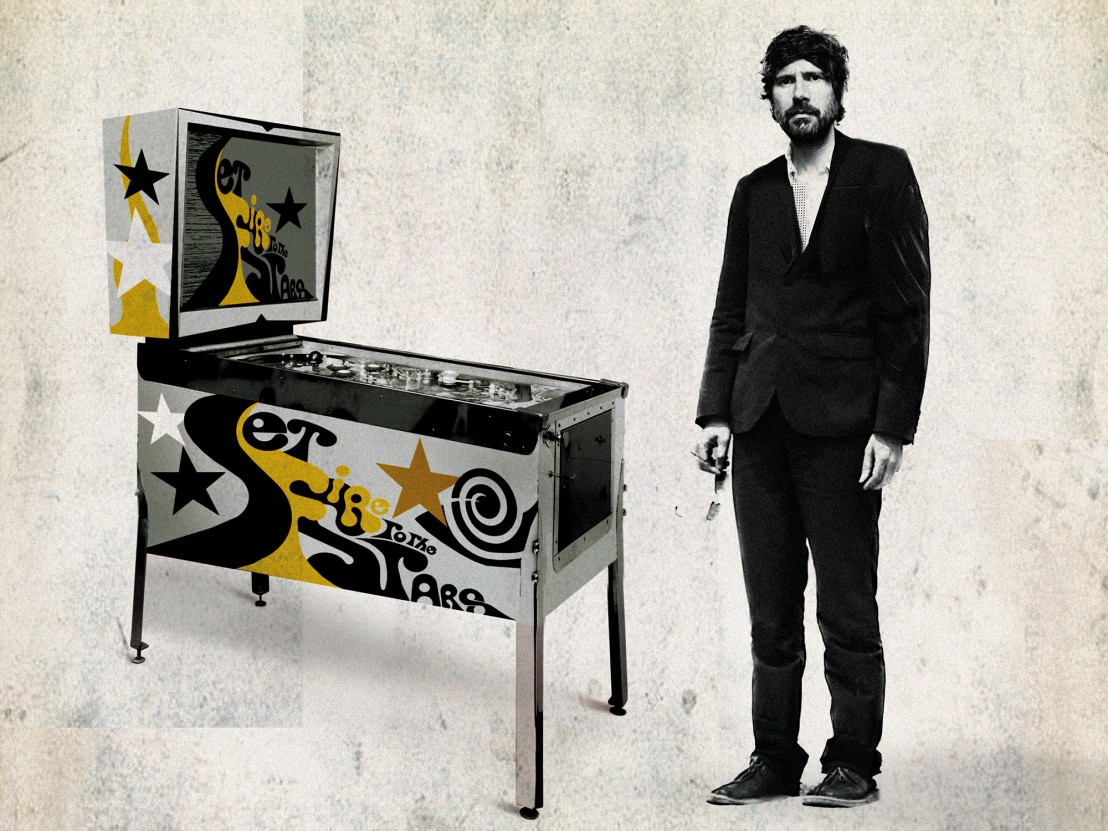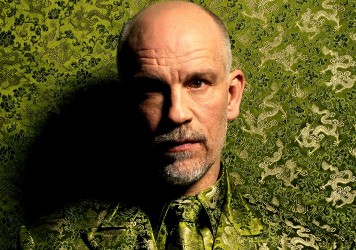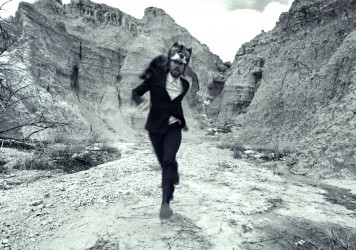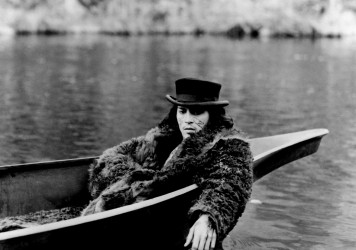
My name is Gruff Rhys, I’m a songwriter and I release albums of songs and stuff like that. In recent years I’ve ended up contributing some soundtracks to a bunch of films. But I’m in no doubt – releasing an OST album into the wild is very different to releasing a conventional generic Long Player called for example, ‘Beach Party 2: Ten Sing-a-Long Summer Barbecue Bangers.’
Yes indeed, in comparison the soundtrack album can be a frustrating beast to tame. The raw music separated from the context of its celluloid home roams wild and can appear anaemic, aloof and anti-social.
One solution to deal with such an animal lest it not cause grief to the general public is to give it a long leash, it then has a licence to meander, sniff out the various tangents that the plot has suggested, safe in the knowledge that it can be reigned in by the perimeters of its new medium, best served – if you’re romantically inclined – by a double helping of the 20 minutes or so that a side of a vinyl LP provides.
This plastic haven provides the composer wild dog a concise vessel to edit the hours of reprising motifs, tension building swells and commissioned thematic songs into a brand new work. Not the 90 minute plus sideshow hike where the animal in question can stop for a drink and hangout casually with the grizzly auteur-bear of cinematography, taking in the view while kicking back at the national park’s snack-bar housing observation deck.
No, this is not the kaleidoscopic sonic popcorn of a completed movie. The OST is the brutalist satellite tower in the pine forest of pop, the purple Portuguese man o’ war in the tranquil blue lagoon of classical music. For example, the albums of these distant cousins – the pop album and the OST – are often compared side by side; ‘I detect none of the pine fresh scent of pop’s forest canopy’ cry the donkeys of drive time. ‘Thats because it’s a concrete structure, not an aerial of vegetation’ retort the rabid wolves of the OST.
Take the track ‘Witch’ on Goblin’s Suspiria soundtrack – a masterpiece in the majestic wilderness of the cinema where Dario Argento places it louder than the dialogue itself, yet ‘Witch’ is a divisive animal when corralled into an unfamiliar domestic audio setting of say, a soft rock loving nuclear family (unless the said family are violently inclined and practitioners of pentagram wielding witchcraft).
Fear not, as we are in safe Goblin’s hands, and soon enough, after a few ear piercing tracks the bulging rock of the friendly, chime laden recurring motif sticks out in the river of burning dissonant lava providing a firm grip, a short respite for an overpriced tub of Ben and Jerry’s before we are swept away on another rubber dingy rapid into the darkest nook of the ear’s evil violet tinted orifice.
As OST’s go, the one I composed for the film Set Fire to the Stars is at the picturesque end of the spectrum of scenic soundtracks – a good few melodic verses away from Suspiria’s evil middle eight – apart from the spooky piano-backed Elijah Wood monologue about the dead mouse. A monochrome affair set in 1950, I felt it was best served by instrumentation from that era. I formed a quasi-jazz band and hired a string quartet. Beyond that I felt no need to ape the styles of the era in question apart from one lunar jazz number, ‘Atom Bomb’, which was played on a jukebox in one of the scenes and so needed to convey that specific year sonically and thematically. It would have never been written outside the context of the film and so it’s a real curiosity, although I stand by the sentiment that the world would be better served without nuclear bombs and it’s a shame disarmament wasn’t sorted out well before the ’50s so that it wasn’t available subject matter for a song.
Regardless of possible pending Armageddon, my favourite soundtrack is one that was featured on a narration free documentary from the mid ’60s that followed the Tour de France around the bends of that great country in verité mode accompanied sonically by just a single drummer playing along to the film on his drum-kit.
Its simplicity belies the tension and excitement that simple percussion (also the main feature of Goblin’s ‘Witch’ too) is able to covey. I saw it on TV as a teenager in 1986 and although I’ve never seen it since and have been unable to source it on the internet as I honestly can’t remember the title, its beats are deeply embossed in my memory – and I aped it on part of the Set Fire to the Stars soundtrack where a short two minute piece consists of just a solitary drummer – shortly followed of course by the recurring motif of the title track.
Sometimes at night I dream of a brutal concrete pyramid that towers gracefully over the surrounding rainforest. A wild dog howls on its apex as the barbecue-loving, tree-living bears chortle sweet melodies to themselves at a dance party below. The conflicting sounds harmonise into the clear starry night above, creating a beautiful light show of boundless sonic possibility and world peace. And then in comes the misjudged saxophone solo of morning radio and I’m awake and it’s a rainy morning in Brexit-era Wales and I long once more for cinematic escape.
The Set Fire to the Stars soundtrack is available via finderskeepersrecords.com
Published 10 Oct 2016

We caught up with the actor at the London launch of his debut record ‘Illuminated’.

The lead singer of Super Furry Animals heads on a whimsical adventure odyssey in search of his cultural roots.

Director Jim Jarmusch found the perfect creative kindred spirit for his surreal monochrome western.